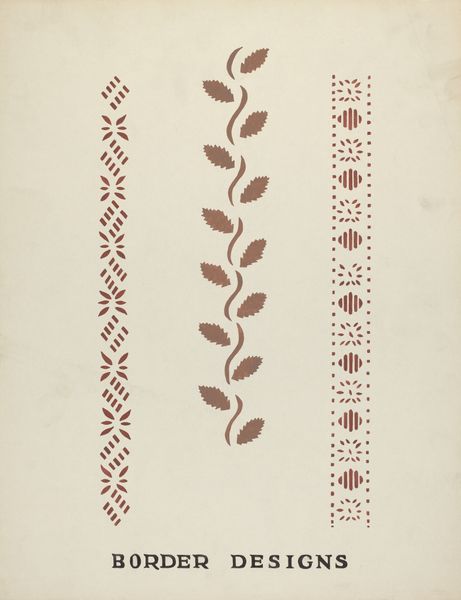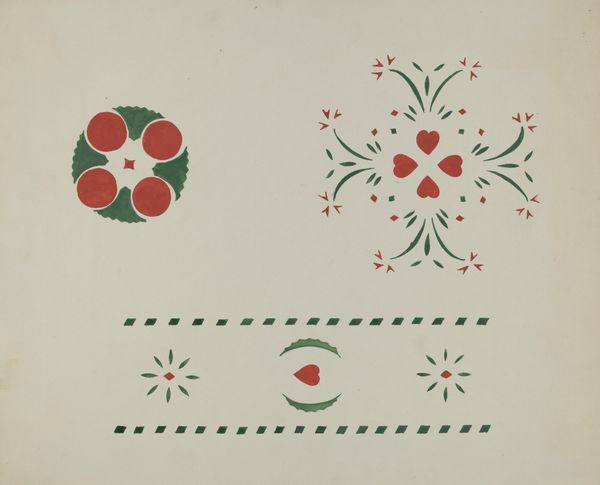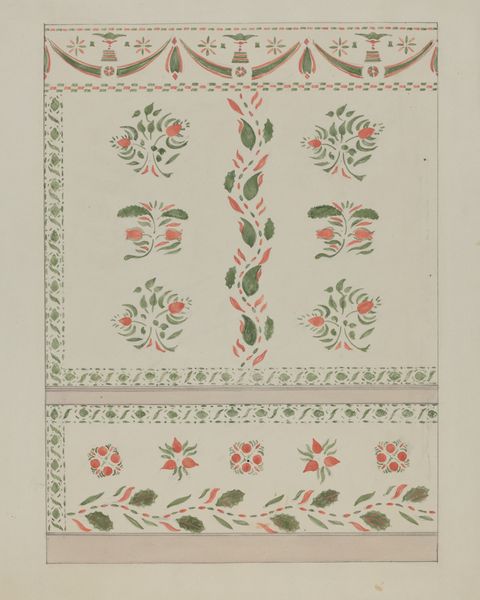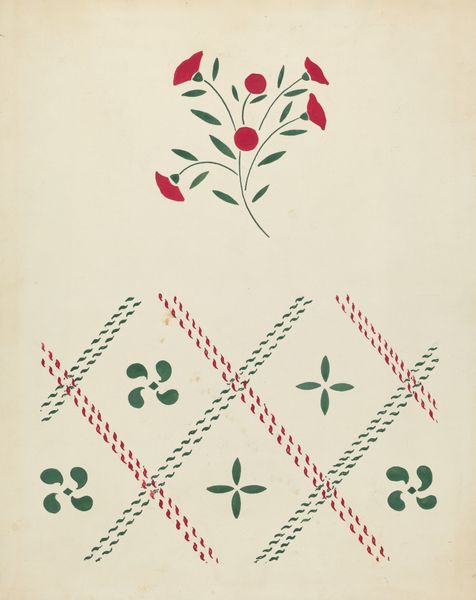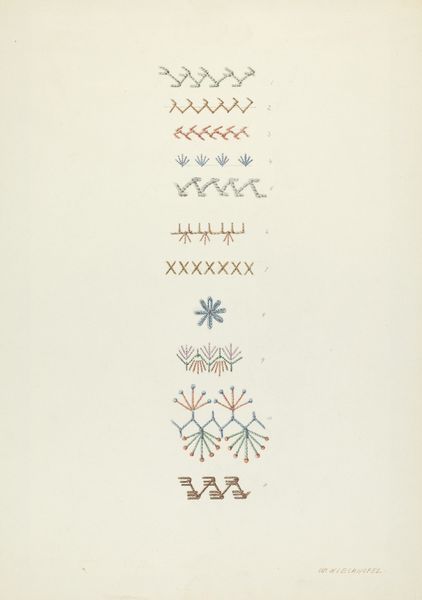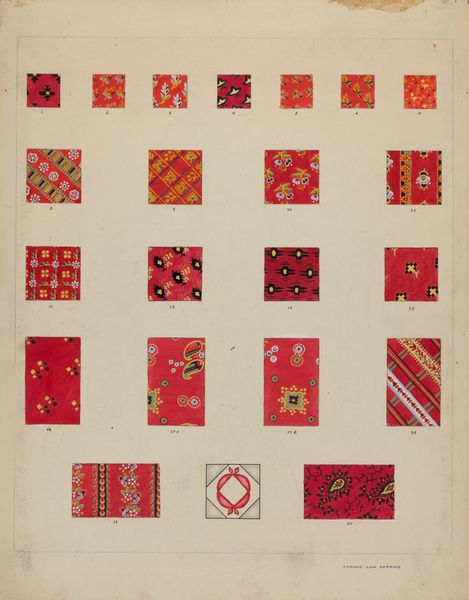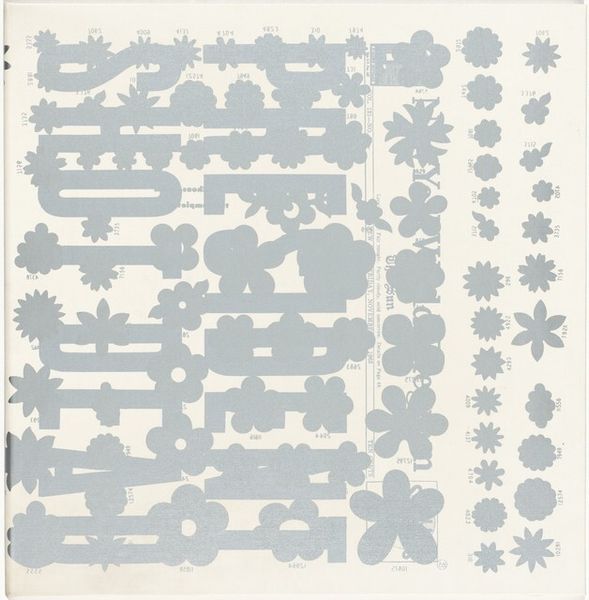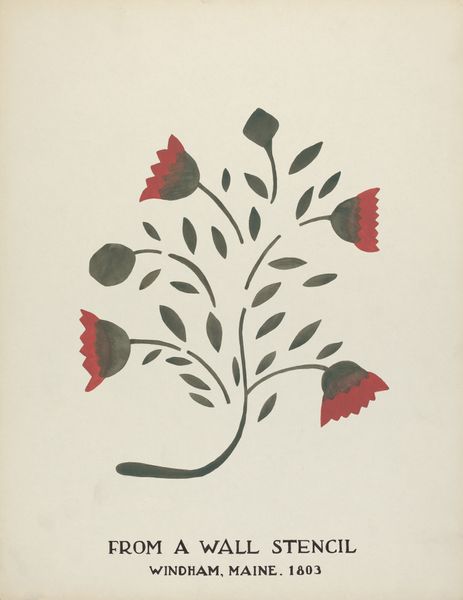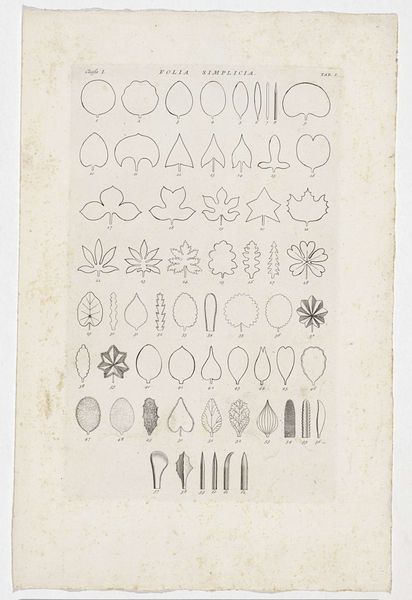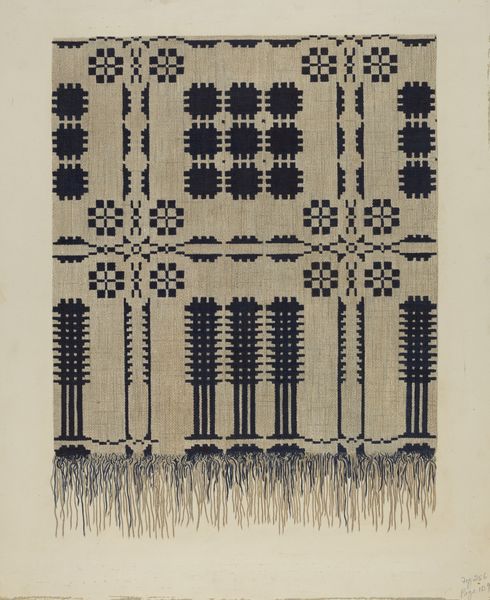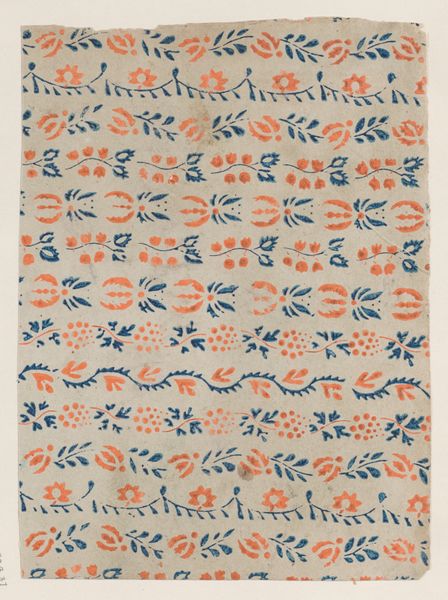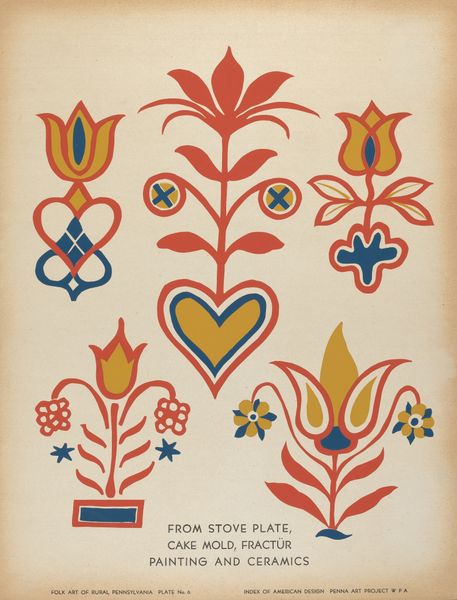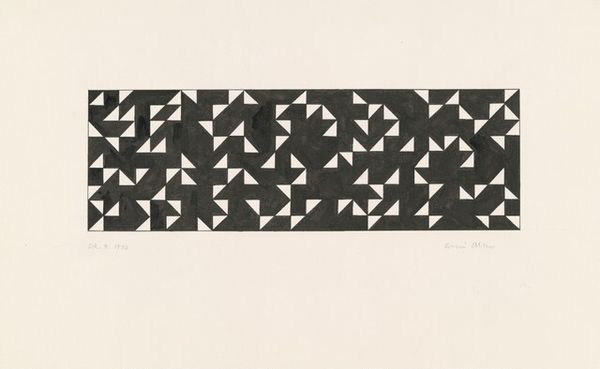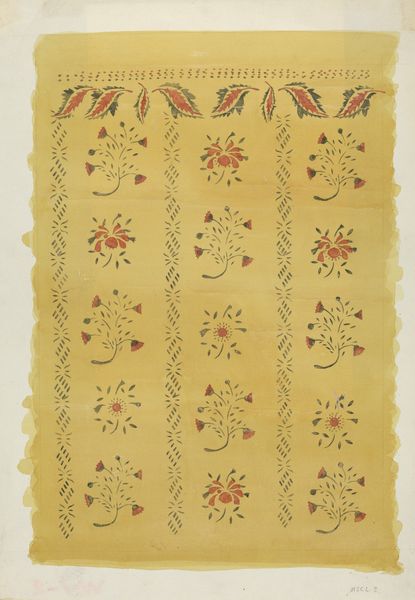
Border Designs From Proposed Portfolio "Maine Wall Stencils" 1935 - 1942
0:00
0:00
drawing, stencil, paper
#
art-deco
#
drawing
#
stencil
#
paper
#
decorative-art
Dimensions: overall: 45.7 x 35.5 cm (18 x 14 in.)
Copyright: National Gallery of Art: CC0 1.0
Curator: Here we have "Border Designs From Proposed Portfolio 'Maine Wall Stencils'," a drawing on paper created by Mildred E. Bent between 1935 and 1942. What strikes you most about it? Editor: A certain…quiet domesticity. The designs feel simple, almost austere, but the repetition creates a sense of comfort. They remind me of hand-printed textiles from the Arts and Crafts movement. Curator: Indeed. Consider the interplay of positive and negative space. Bent masterfully utilizes the stencil technique to create visually engaging patterns. Notice how the shapes are simplified, almost abstracted, yet they remain recognizable as flowers, leaves, and geometric forms. Editor: And the limitations of the stencil enforce a kind of democratic aesthetic. Mass production meets handcraft, hinting at broader social access to decorative art. One could imagine these patterns gracing the walls of modest homes during the Depression era, a subtle act of resistance against hardship through beautification. Curator: An intriguing proposition. Note the careful consideration given to the overall composition. The arrangement of the borders, the spacing between them, it all contributes to a sense of balance and harmony. And then there's the color scheme…the earth tones and muted reds feel simultaneously classic and restrained. Editor: The colors whisper rather than shout. They invite closer inspection. Also, do we know anything about Mildred Bent's practice? I wonder about her position as a woman artist in Maine during this period and the choices she made in embracing what could be considered 'women's work.' Was there an agency, perhaps an activism, embedded in her aesthetic? Curator: That’s a very valid consideration to push the scholarship forward. I’d offer in turn that the clean, geometric lines hint at an appreciation of modernism and its rejection of excessive ornamentation, finding beauty in simplicity. Editor: Yes, those designs offer visual economy—they provide a structure upon which the narrative of an interior space could emerge in collaboration with residents and inhabitants of this space. Curator: On my side, I find I come back to an analysis of form, light, space, and a close attention to visual composition when contemplating Bent's borders. Thank you for exploring her art with me today. Editor: And I’m left contemplating how objects might reveal an entire world that connects individuals, their work, and our future understandings. Thanks!
Comments
No comments
Be the first to comment and join the conversation on the ultimate creative platform.
